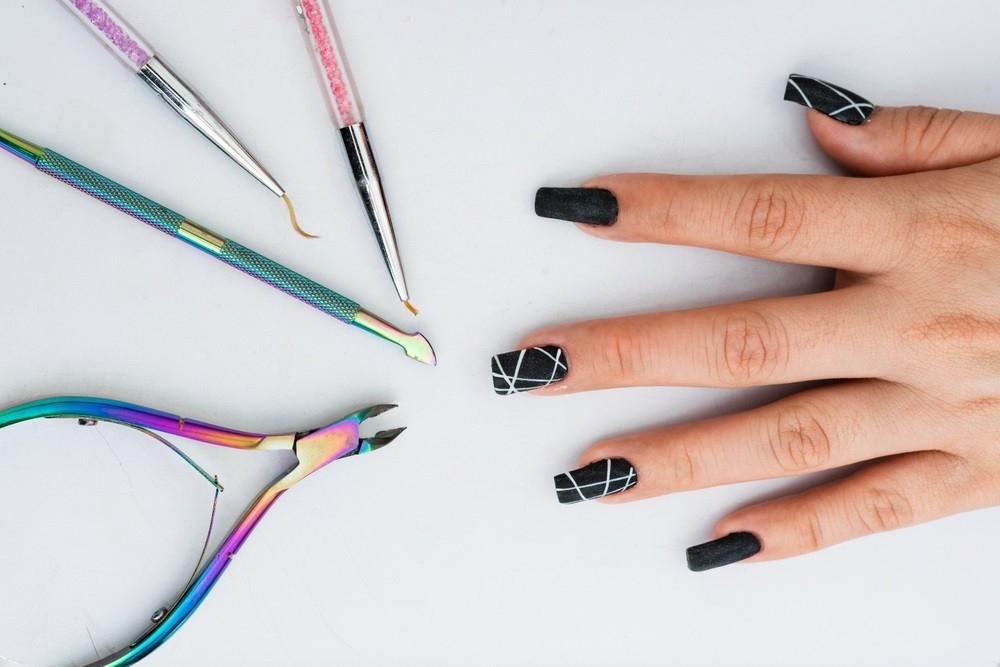Contents

You undoubtedly already know about gel nails, acrylic nails, and even dip powder nails if you’re all about upping your nail game with bold colors or elaborate nail art. But let us show you this contemporary nail polish formulation if you need to familiarize yourself with Polygel nails. We’re sharing all you need to know about Polygel nails so you can decide if they’re suitable for your next manicure, from what they are to how they compare to gel nails and acrylics. With Maby, you can take the initiative in everything. Visit the Maby blog to discover the most trending nail designs today.
What is polygel?
For nail technicians, a hybrid nail polish compound called Polygel was developed. It delivers the best aspects of gel and acrylic nails. Essentially, it’s a nail augmentation that uses clear gel and acrylic powder to give you the ideal set. It is a pliable gel substance that you may shape in any way you choose.
The all-in-one recipe allows nail techs the maximum control when shaping and overlaying your ideal nails because it doesn’t require ratios, mixing, or monomers. Because Polygel doesn’t set until it is fully cured, your technician can take their time producing the seamless nail aesthetic you choose. This makes Polygel exceptionally user-friendly.
It is available in various hues and sheens, just like regular nail paint. The gel can be added to tips or nail extensions or placed over your natural nails using an acrylic brush. It is cured like gel polish with a UV or LED light after being brushed and molded.
How are polygel nails applied?
What to anticipate when scheduling a Polygel manicure appointment is shown here (or attempt one yourself).
1. Nail prep
Your nail technician will prepare your natural nails similarly to how they would go for gels by ensuring they are clear of polish, filed, and buffed, so they have no shine.
2. Apply the polygel
Your nail technician will then use a precision brush to apply the poly gel mixture to your nails. Like with acrylic, this will be positioned in the middle of your nail, beginning with a little bead or ball.
3. Smooth the formula
Your nail technician will spread the substance to cover your entire nail and shape it as desired using a brush saturated with a particular Polygel solution.
4. Cure the nails
Your nail technician will ask you to place your nails under an LED or UV lamp for roughly 30 seconds after applying the Polygel. Your nail artist can repeat the first two stages to use a different color for your nail, such as a white tip, depending on the look you’re going for.
5. File and shape
Because polygel is softer than other materials, your nail technician can shape it without using an e-file. A hand file will do the trick, removing any lumps or uneven surfaces and further defining the design.
6. Apply your finish
Your nail technician will apply a top coat to seal the Polygel and give your preferred finish, whether you want shining or matte nails.
7. Cure the nails again
Before proceeding, you’ll need to cure your nails once more under a nail lamp.
How long do polygel nails last?
In addition, to dip powder nails, polygel has gained notoriety for several reasons, but one that stands out is how long it lasts. A Polygel manicure can last up to three weeks with the proper upkeep and application.
8. Pros and cons
Each technique has benefits and drawbacks, just as various gel manicures. According to Lim, Polygel, also known as Acrygel, is a substance that combines acrylic with gel. According to Lim, one benefit of polygel is its extended wear, which lasts for three to four weeks. They don’t need to be mixed, and are odorless, lightweight, and simple to apply and shape.
Polygels are kept in reasonable condition by adding more products to the growth area, which results in a shorter service time. This may be regarded as a disadvantage by those who want to scrap the entire development and start from scratch each time. “Another disadvantage of polygels is the need to remove the product for a fill or removal because it is a stronger substance. The augmentation should be removed using an e-file without injuring the nail plate for the best results, which can be done safely at home with some practice.”
Polygel vs. acrylics vs. gel nails
Polygel nails are better than acrylics in that your nail technician will be patient because they only become rigid once cured under an LED or UV light. Additionally, polygel nails are said to be more durable than gel manicures. Overall, the formula aims to blend the qualities of gels and acrylics that we already know and enjoy while removing the rates that we don’t, producing a powerful yet lightweight choice.
Does polygel ruin your nails?
We adore Polygel nails since they don’t harm or deteriorate your nails, which is another reason. Your nail technician will file the Polygel off of your nails to remove the bulk to remove them. Acetone will next be used to remove any residual formula and product, leaving your nails clean and ready for your next manicure. File the polygel off gently if you intend to remove it at home. Any nail formula that is vigorously filed off can harm your nails.
How much do they cost?
The type of Polygel application will affect the cost of Polygel nails. A fill-in typically costs $80, while a complete set or sculpted extension application may cost between $55 and $150.
